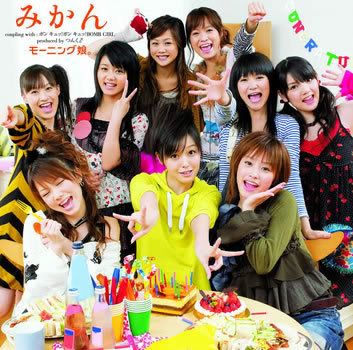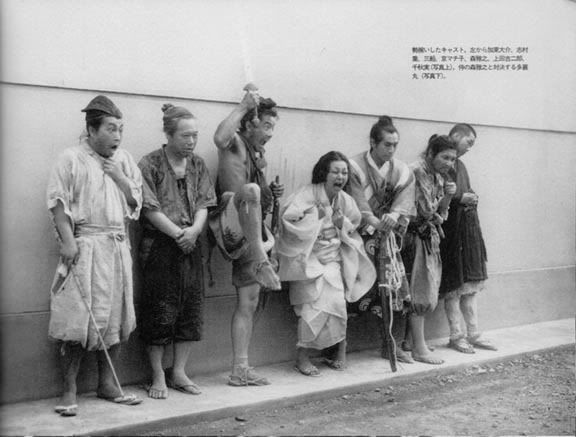Topics Covered:
Introductory "Precession",
the trouble with icons (more than you might think),
the number one cause of Hello Kitty-related violence,
murder, suicide, possibly both at the same time,
obscure celebrities going about their business.

Prepare to have your mind adorably blown.
Introductory "Precession",
the trouble with icons (more than you might think),
the number one cause of Hello Kitty-related violence,
murder, suicide, possibly both at the same time,
obscure celebrities going about their business.

Prepare to have your mind adorably blown.
When you read Jean Baudrillard's essay, "The Precession of Simulacra", you get the feeling that what's at stake in representation is a lot more than just the possibility of clear and efficient communication of ideas through imperfect/unstable symbols, rather simulations have the potential to completely undermine your entire notion of an objective "truth" or "reality". At first that sounds really melodramatic, but as you read along his argument proceeds in such a logical fashion that your very doubts begin to seem unreasonable. After all, how often do you contemplate the objective basis of your views? What would happen if someone could replicate the conditions of reality without satisfying any of your prerequisites for establishing something as real? What does it matter if you ultimately can't even tell the difference? I don't really have definitive answers to any of those questions, but follow me anyway on a magical voyage into HYPERREALITY!
First of all, it's important to establish that what Baudrillard means by "simulation" is not the same thing as "copy" or "model", rather it is a construction which completely recreates the appearance and effects of the original to the extent where the two are essentially indistinguishable. A "model" would be something like a ship in a bottle. You can differentiate it from a "real" ship because it is much smaller in size and it can't serve the same purposes (i.e. it is purely aesthetic, incapable of actually transporting goods or people across a body of water.) The primary example he uses for "simulation" is psychosomatic illness. It creates symptoms identical to those of a "real" illness to such a degree of accuracy that the sufferer truly believes that they are sick, but there is no observable biological cause. Is a psychosomatic illness any less real simply because it doesn't fit Louis Pasteur's Germ Theory of Disease? Of course not, but where does that leave us? Pasteur's theory describes the majority of cases so it still helpful, but it is no longer tenable as the objective "truth" behind all illness. Simulations have a tendency to complicate matters like that by exposing what we thought were fixed rules as merely generalizations, thus undermining the basis of our reality.
Unfortunately, there's not a lot we can do to recuperate a sense of stability other than A) placing our faith in representations or B) trying to escape them completely. Of course, both of those strategies carry their own sets of problems. Baudrillard describes the conflict between iconolaters (image worshipers) and iconoclasts (image breakers) prominent in Reformation period Christianity. The iconolaters fell into group A, they "were content to venerate God at one remove", using religious images like crucifixes and statues. Of course, along with such practices come instances of idolatry where the image itself starts to receive praise rather than the deity it is supposed to be representing. So the group B types, the iconoclasts, decided to do away with religious representation completely in order to restore honor to the "true" God and they went around actively destroying religious depictions. However, their insecurity ultimately did more to undermine their truth than uphold it since the logic of their protests instilled the images with a kind of power which even the iconolaters had never intended. If people could apparently receive miraculous boons from a statue which wasn't actually representative of God, then what was the difference? Perhaps there was never a truth behind the image and God was never anything more than a human construction from the beginning.
It's really a problem with no solution since human culture has already become too dependent on symbols to be able to function without them. Even simple communication requires a certain degree of "faith" that your words represent real objects and phenomena which the listener can also understand and so comprehend your meaning. To paraphrase Derrida, there is no way to get outside of the discourse of imagery.
Throughout the essay, Baudrillard expresses a nostalgia for something like a simpler time when images authentically meant what they said. It's almost as if the image has grown progressively stronger as Postmodern thought and practice became more and more thoroughly integrated with our culture.
"These would be the successive phases of the image:
[1]-it is the reflection of a basic reality
[2]-it masks and perverts a basic reality
[3]-it masks the absence of a basic reality
[4]-it bears no relation to any reality whatever: it is its own pure simulacrum."
Whether or not this is actually a modern development or merely symptomatic of a more general acceptance of symbolism without an observable, preexisting referent is kind of a moot point. The really interesting thing is looking at cultural examples of progression to higher levels of simulation and noting the changes which allowed for this advance. Japanese culture in particular is famous for adapting existing "Western" concepts and retooling them in such a manner which achieves the same effect as the original (often even more efficiently and fantastically), but through means which disregard the prototype's rationale.
Let's start with an example from popular culture: the promotional mascot. When you think of Frosted Flakes you probably think of Tony the Tiger. In commercials Tony is always playing sports with the kids, both a participant and a role model encouraging children to adopt a more active lifestyle. Even his endorsement for the product, the resounding "They're Grrrrreat!", sounds like someone cheering for the home team. The question is: what does any of this have to do with Frosted Flakes? They're not especially healthier for you than any other cereal, they won't improve your teamwork, and they certainly won't increase your physical abilities. This is the classic American conception of a mascot: it signifies positive qualities which the viewer will then associate with the product even though they don't actually exist in the product itself. This is a third order simulation which masks the absence of a reality (i.e. the only inherent value in cereal is nutritional and Frosted Flakes will not actually make you better, faster, stronger, etc.)
Anyone familiar with contemporary Japanese culture knows that it is chock-full of promotional characters. Practically every product is partnered with a charming creature to endorse it and even non-consumer based institutions like Volunteers for Children's Rights Protection and government prefectures have their own mascots. However, the ultimate manifestation of this phenomenon appeared back in 1976 with the Sanrio corporation's official licensing of the now ubiquitous "Hello Kitty". What makes Kitty so revolutionary is that she is largely considered to be the first mascot to precede her products, intended to be consumed in and of herself. Unlike the traditional Western model where the product comes first and then a character is created to add positive connotations onto it, Hello Kitty inverted the system by having products made to promote her adorable visage. She is a fourth level representation, a pure simulation of cuteness, unbound to any particular set of personal characteristics (unlike Tony, her "personality" is entirely aesthetic) or physical format making her an empty vessel capable of promoting anything and everything. Tarot cards, exhaust pipes, toasters, sex toys; Kitty has appeared on all of them and regardless of the item's specific function the "truth" she embodies (which is nothing more than her appearance) alters it into something equally decorative and insouciant. This is the very real and unnerving power of pure simulation: it doesn't refer to anything other than itself so it can contain any value and never compromise its own integrity.
For a more "high cultural" example of this same principle, let's turn now to the fiction of Ryunosuke Akutagawa, one of modern Japan's most critically lauded authors. His short story, "In a Grove" ("Yabu no Naka"), which, incidentally, is also the basis of the famous Kurosawa film Rashomon, was first published in 1922. While the West was embracing Modernism, a style which tends to complicate the notion of reality by including a multiplicity of equally valid perspectives in relationship to the same event, Akutagawa came out with this text which actually has a lot more in common with Postmodernism, a style which ups the ante by containing a multiplicity of realities in irresolvable conflict with one another. Based on a traditional Japanese folktale, the plot basically amounts to a series of oral accounts describing the events which led up to the murder of a well-to-do man in the titular grove. Each of the first-hand witnesses of the death, a known criminal, the man, and his wife, all describe the event differently and each one takes the blame for the killing (the man is contacted through a spiritual medium, the other two confess to the police.) Each of their explanations is equally viable in relation to the available evidence, but the reader, placed in the position of the confessor (as in one who receives the admission of guilt), will inevitably feel compelled to make a judgment as to which is the "true" account in spite of the absence of an objective basis for such a decision. The point, of course, is that justice can't exist in the presence of multiple truths so in order to restore our faith in the logical enforcement of morality we often have to act arbitrarily. Baudrillard describes this as being symptomatic of our current climate of representation:
"No more mirror of being and appearances, of the real and its concept. No more imaginary coextensivity: rather genetic miniaturization is the dimension of simulation. The real is produced from miniaturized units, from matrices, memory banks, and command models- and with these it can be reproduced an infinite number of times. It no longer has to be rational, since it is no longer measured against some ideal or negative instance. It is nothing more than operational."
How can justice be truly "just" if apparently authentic motives and guilt and be produced and reproduced to fit any situation? What we are left with is a fourth level simulation of justice, a system which is forced to accept any number of plausible explanations in order to sustain itself with no real obligation to entertain concepts like "right" and "wrong".
Ok, well that was kind of a bummer, so let's turn now to something which should be more comfortingly familiar: reality television. Criticism of reality TV is well-worn territory, I know. Skepticism is almost expected to such an extent that shows have begun to explicitly reassure the audience of their own authenticity. When the Court TV network made its transition to the much more generalized truTV at the beginning of this year it came equipped with a bold new slogan to set itself apart from its "over-produced" brethren:
The truth, of course, is that the change was little more than nominal. If you look at its programming lineup you'll see the same shows they've been broadcasting for years. No, for something truly unique it's best to look to an outside source. Japanese popular culture saves the day once more!
If you're not familiar with the J-Pop supergroup Morning Musume, consider this your formal introduction:
Of course, Morning Musume (or Momusu for short) are more of a relative concept than a fixed team of artists. Though quite successful in their own right, the group also functions as kind of a marketing machine for their label, Hello! Project. Established members eventually "graduate" to solo careers or smaller sub-groups and new members are then auditioned to replace them so the roster is constantly changing. Nevertheless, even though they remain indistinct as individuals, as a collective they have undoubtedly already penetrated your subconscious. When you first saw those videos online demonstrating the stereotypical "wackiness" of Japanese television, you were watching Morning Musume.
The prevalent youtube clip "Dramatic Prairie Dog", which has spawned so many parodies, was also taken from a TV appearance with Momusu.
But there's an even more amazing show you've probably never heard of: Futarigoto. (Roughly translated, "Together".) Basically it consists of a variety of interview segments with the girls from the band, but one in particular is uncannily captivating. A given girl lounges around by herself in a well-furnished Tokyo apartment. That's it. There's no narrative progression, no challenges, no goal, no cheesy host, no special obligation to be entertaining... there's not even any creative editing to create the illusion of action, just a few transitional skips ahead during the really static portions. In fact, often the girl will seem confused as to what she's supposed to be doing. One just does math homework for her entire segment (positive role model!) Another watches a horror movie on DVD and all we see are her reactions. It's absolute fucking mundanity, but the whole time there's this news ticker on the side of the screen giving frequent, enthusiastic updates like this is breaking news.
Even the ingrained idea that the lives of celebrities have their own inherent glamor doesn't seem to hold up especially when you have only a dim perception of why the subject is supposed to be interesting in the first place and yet somehow it's still hard to look away. What does it all mean?!
Baudrillard conjectures that in the old days simulations designed for entertainment often served the secondary purpose of bolstering our sense of reality. You step outside the gates of the Magic Kingdom in Disney Land and suddenly you're in a giant parking lot. You want to be immersed in fantasy, but only temporarily and within certain, defined limits so that you can leave with a deeper appreciation for the stability of the everyday world. Now reality is our entertainment and not the just kind of "reality" where people are vying for social supremacy on a deserted island or competing for an exclusive job position, but also the quotidian stuff your little sister does when she gets home from school. Our actions are serious to us when we perform them, but with a digital camera they can be converted into mass amusement. Star Wars Kid, Chris Crocker, Lil' ShowStoppa: none of them intended the joke they became. People are becoming alienated from their own lives. Now you can actually become famous against your will. Welcome to the Desert of the Real.
Here, soothe your Postmodern paranoia with some classic Japanese jams:




2 comments:
this is such a good blog. interesting to say the least would be an understatement. I have to read it in sections like i do for most semioticians but thats what makes it a lasting read.
thanks dan
Man, I've been reading so much pomo theory lately that my head feels like a brick. It's good to see someone else working with it to, and using it in a critical fashion.
I'm currently on a derrida deconstruction vs. domestic roles, gender stereotypes, and love/sexuality tip.
I never feel like there's a good method for real discussion over the internet, so if you're ever in Boston lets get a coffee and philosophize like those french guys used to.
Post a Comment